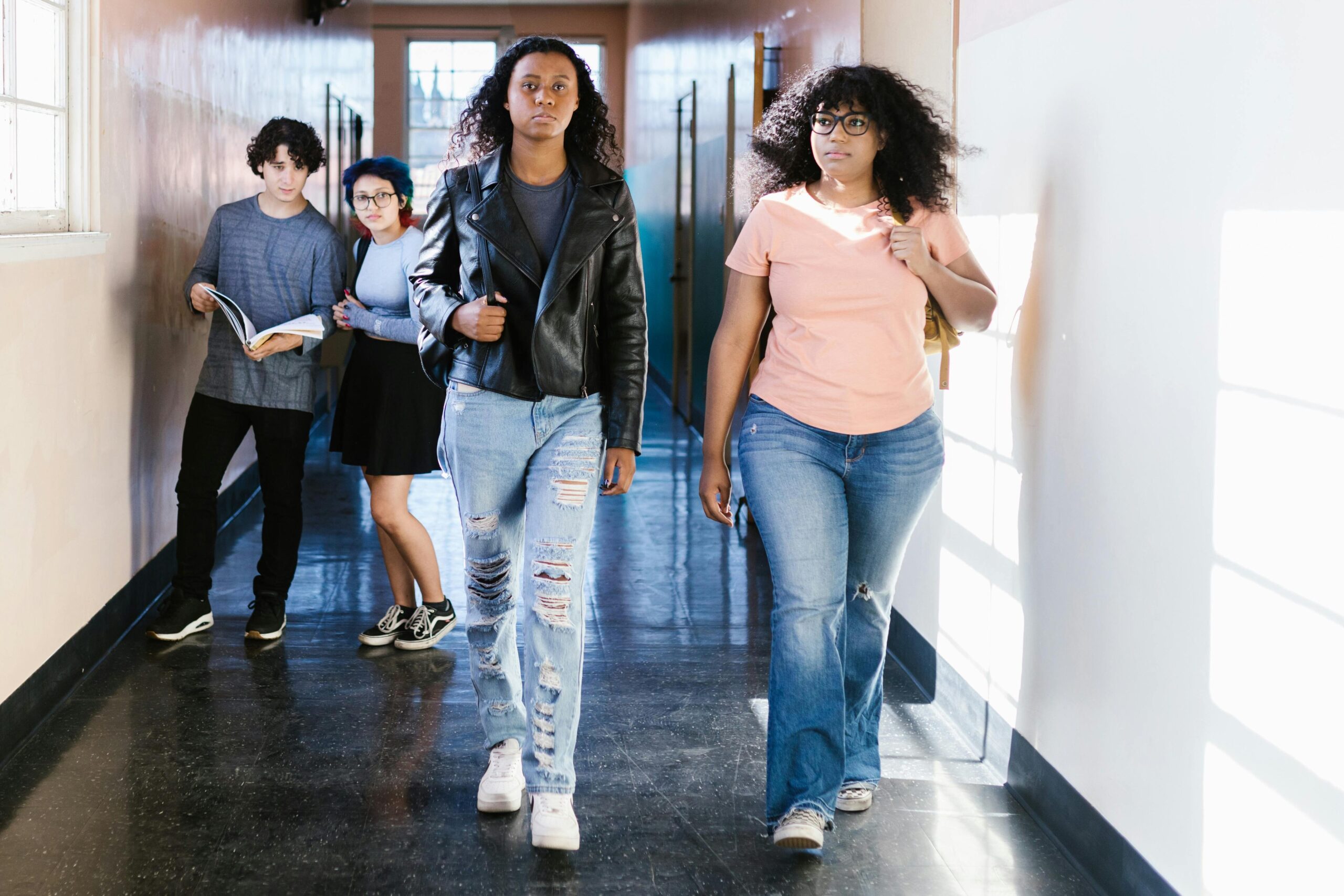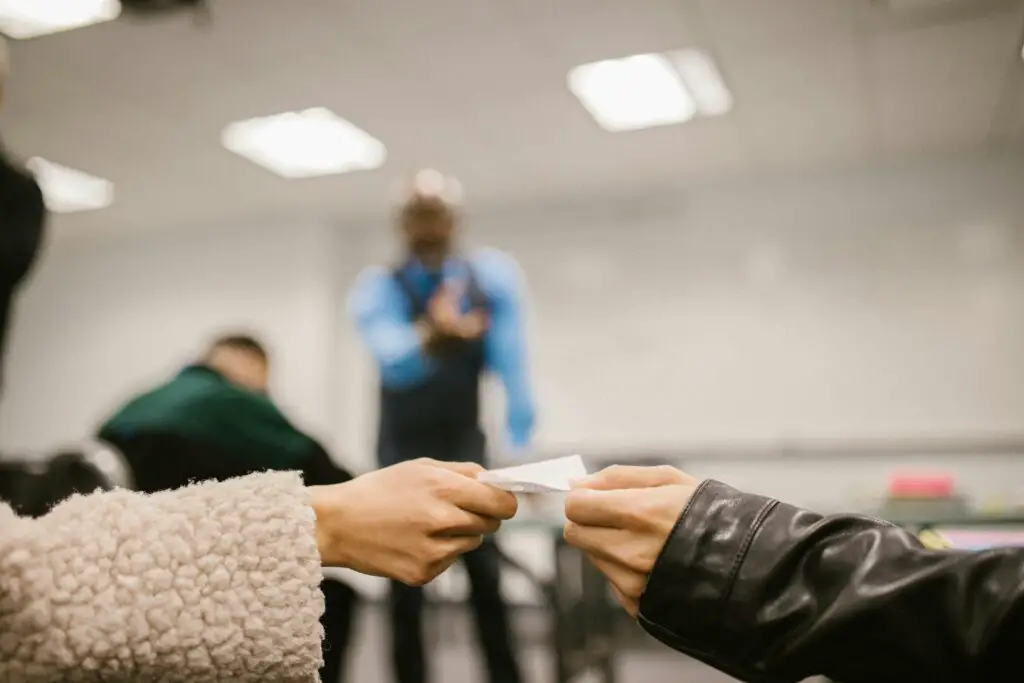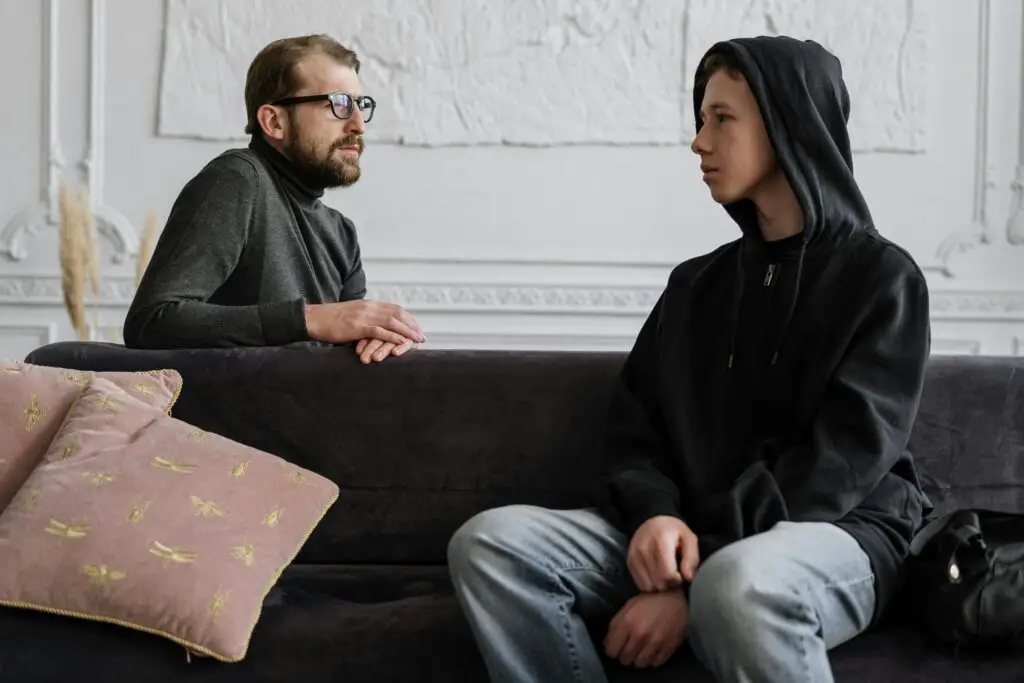1. Bringing a Cell Phone to School

Back in the ’90s and early ’00s, if a teacher saw a student with a cell phone, it was practically a guaranteed trip to detention. Schools treated them like dangerous distractions, and some even had strict rules about confiscating them on sight. Parents were often frustrated, especially since they were the ones paying for the phones to keep in touch with their kids. It didn’t matter if you were just checking the time or letting your mom know you got to school safely—if a teacher caught you, you were in trouble says Time Magazine.
Fast forward to today, and not only do students have their phones on them at all times, but many schools actually encourage them for learning purposes. Teachers use apps to take attendance, assign work, and even allow students to look up information during class. Some schools have rules about keeping them on silent or putting them away during lessons, but the days of detention for simply having one are long gone. It’s funny to think that something so normal now used to be such a big deal says Reddit.
2. Wearing Ripped Jeans

Once upon a time, showing up to school in ripped jeans meant you were either a rebellious troublemaker or someone who forgot the dress code. Many schools considered them sloppy or inappropriate, even if the rips were small. Some teachers would send kids to the office to change or even give them detention for “not dressing properly.” If your jeans had rips at the knees, you might’ve gotten away with it, but anything above that was considered too revealing says Edutopia.
These days, ripped jeans are a fashion staple, and schools have pretty much given up trying to fight the trend. Students can wear them without anyone batting an eye, and even teachers wear them on casual Fridays. It’s wild to think that something sold in every major clothing store was once considered against the rules. Now, instead of punishment, the only debate about ripped jeans is whether you’re willing to pay extra for all those holes adds NWCommons.
3. Talking Back to a Teacher

Once upon a time, questioning a teacher—no matter how respectfully—was seen as backtalk. If a student disagreed with a rule or tried to defend themselves, they were often met with detention or a stern lecture about “knowing their place.” Some teachers saw any challenge as a sign of disrespect, even if the student was simply asking for clarification. It was one of those “because I said so” situations that left many kids feeling frustrated.
Nowadays, schools encourage students to speak up and advocate for themselves. While outright disrespect still isn’t tolerated, many teachers appreciate when students engage in discussions and express their opinions. In fact, critical thinking is seen as an important skill, and students are often rewarded for questioning things in a thoughtful way. The days of blindly accepting whatever an authority figure says are over, and that’s probably for the best.
4. Passing Notes in Class

Before texting was an option, students relied on old-fashioned note passing to communicate during class. It was risky business—if a teacher caught you, the note might get confiscated, read out loud, or land you in detention. Some schools cracked down hard, believing it was a major distraction. And if the note contained anything remotely inappropriate, you were definitely in trouble.
Now, passing notes seems almost innocent compared to what students can do with their phones. Instead of writing on tiny scraps of paper, kids just send a quick message or Snapchat under their desks. Teachers still try to keep students focused, but the idea of getting detention for a handwritten note feels almost charming. Honestly, some teachers might prefer it to kids secretly scrolling TikTok during a lesson.
5. Having Colored Hair

For years, schools treated brightly colored hair as some kind of rebellion against authority. If you dyed your hair blue, pink, or green, it was often considered “distracting” and against dress code policies. Some students were sent home, forced to dye it back, or even given detention for not following the rules. It seemed like anything other than natural hair colors was considered unprofessional.
Now, hair color is just another form of self-expression, and most schools don’t even bother regulating it. It’s completely normal to see students (and even teachers) rocking vibrant shades, and no one thinks twice about it. With celebrities and influencers constantly changing their hair color, it’s clear that bright hues are here to stay. The fact that schools once treated it like an act of defiance seems almost ridiculous now.
6. Wearing a Hoodie with the Hood Up

Wearing a hoodie itself was never the problem—it was putting the hood up that seemed to send teachers into a frenzy. Many schools claimed it was a sign of disrespect or that it made students look “suspicious.” Some even argued that hoods made it harder to identify students on security cameras. As a result, kids who pulled their hoods up in class or the hallways were often met with warnings or detention.
These days, hoods are just another way to stay cozy, and most schools don’t make a big deal about them anymore. Unless there’s a specific dress code in place, students can wear their hoods up without anyone assuming they’re up to no good. In a world where everyone wears hoodies—from athletes to tech CEOs—it’s strange to think they were once such a controversial piece of clothing.
7. Chewing Gum in Class

There was a time when chewing gum in school was practically treated like a crime. Teachers worried about kids sticking it under desks, blowing bubbles during lessons, or distracting others with constant chewing. Many schools had strict no-gum policies, and breaking the rule often meant detention or extra cleanup duty. Some teachers even made students spit it out in front of the whole class.
Now, gum isn’t such a big deal anymore, and some schools even allow it because it helps with focus. Studies have shown that chewing gum can improve concentration and reduce stress, so teachers are less likely to see it as just a distraction. As long as students aren’t making a mess, most teachers let it slide. Turns out, all those detentions over a piece of gum were probably unnecessary.
8. Wearing Shorts That Were “Too Short”

Dress codes used to be a minefield, especially for girls who wore shorts. If they were deemed too short by a teacher—often based on an arbitrary fingertip rule—students could be sent to detention or forced to change. It didn’t matter how hot it was outside; rules were rules. Some students even got in trouble for wearing athletic shorts, despite the fact that they were completely normal outside of school.
Thankfully, many schools have relaxed their dress codes, recognizing that strict rules often targeted girls unfairly. Shorts are now much more accepted, and schools focus more on comfort and practicality. While dress codes still exist, they’re less rigid than they used to be. Students no longer have to worry about a ruler being held up to their shorts like they’re in some kind of fashion court.
9. Listening to Music with Headphones

Back when CD players and MP3 players were a thing, teachers hated seeing students with headphones. If you had them in class—even if you weren’t listening to anything—it was seen as a sign of disrespect. Many teachers assumed you weren’t paying attention, and some schools outright banned them. If you were caught, detention was a common punishment.
Now, headphones are everywhere, and some teachers even let students use them while working independently. With digital learning becoming more common, listening to music or podcasts is often encouraged to help with focus. As long as students aren’t blasting music in the middle of a lesson, it’s generally not a big deal anymore. It’s funny to think how something so normal now used to be such a huge issue.
10. Wearing a Band T-Shirt

Once upon a time, wearing a T-shirt featuring certain bands could land you in hot water at school. If a teacher or administrator thought the band’s name or imagery was too “inappropriate” or suggested rebellion, you might get detention or be forced to turn the shirt inside out. Even harmless rock bands were sometimes seen as a bad influence, especially if they had edgy album art. Schools often had vague dress codes about “disruptive clothing,” and band shirts sometimes fell under that category.
These days, band T-shirts are just another part of everyday fashion, with stores selling vintage designs for bands that many students have never even listened to. It’s not unusual to see a high schooler wearing a Nirvana or Metallica shirt without anyone thinking twice about it. Schools are much more relaxed about music-related fashion now, as long as it’s not overtly offensive. Ironically, the same teachers who used to hand out detentions probably have classic rock shirts in their own closets now.
11. Having a Piercing Other Than in the Ears

Facial piercings used to be a major no-go in most schools. If you showed up with a nose ring, eyebrow piercing, or even multiple earrings, you were likely to get detention or be told to take it out immediately. Schools saw them as “distracting” and sometimes even associated them with bad behavior. Some students got creative by using clear retainers to hide their piercings, hoping to avoid trouble.
Now, piercings are just another form of self-expression, and most schools don’t even care. Plenty of students (and even teachers) have nose rings, cartilage piercings, or small facial jewelry, and no one bats an eye. The idea that a tiny piece of metal could somehow disrupt learning seems outdated now. What was once seen as rebellious is just another normal part of teenage style.
12. Showing Up Late Because of Traffic

Back in the day, showing up late to school—no matter the reason—often meant detention. Even if a student’s bus was late, traffic was terrible, or there was a legitimate emergency, some schools still handed out punishments. It didn’t seem to matter whether it was within the student’s control or not. Some kids even had to run from the parking lot to avoid getting in trouble for being a minute late.
Now, many schools have a more understanding approach, especially with technology making it easier to track tardiness. Some allow students a grace period, while others use online check-ins rather than immediate punishment. Schools are recognizing that life happens, and a late arrival isn’t necessarily a sign of irresponsibility. The days of strict, automatic detentions for showing up a few minutes late are mostly in the past.
13. Drinking Coffee in Class

Believe it or not, there was a time when bringing a cup of coffee to school was practically forbidden. Teachers saw it as an “adult” drink, and students who brought it into class were sometimes told to throw it away or risk detention. Some schools banned all outside drinks entirely, assuming they would be a distraction. It seemed ridiculous, considering many teachers drank coffee in front of their students all day long.
These days, teenagers openly walk into school with Starbucks cups, travel mugs, and energy drinks, and no one seems to care. Schools have mostly accepted that caffeine is a part of life, and some even sell coffee in their own cafeterias. With so many high schoolers juggling early mornings, extracurriculars, and homework, it’s no surprise they need a little caffeine boost. The idea that a student once got detention for sipping coffee seems almost laughable now.
14. Using a Calculator for Math

In the past, some teachers believed using a calculator was a form of “cheating.” If a student pulled one out when they weren’t supposed to, they could face detention or even have it taken away. Many schools wanted students to learn how to do math by hand first, so calculator use was strictly limited. If a teacher thought you were relying on it too much, you could get in trouble.
Now, calculators are not only allowed but often required, especially in higher-level math classes. With advanced technology and online learning tools, schools recognize that calculators are essential for solving complex problems. Even basic math problems are often done on phones or tablets now. Instead of being seen as a shortcut, calculators are just another tool to help students succeed.
15. Expressing Political Opinions in Class

There was a time when openly discussing politics at school was seen as disruptive or even disrespectful. If a student brought up a political issue or voiced an opinion that a teacher disagreed with, they might be told to stay quiet or even get detention. Some schools avoided political discussions altogether, fearing they would cause too much conflict. Students were often encouraged to “wait until they were older” to engage in those conversations.
Now, many schools actively encourage students to think critically and engage in political discussions. With social media making political topics more accessible than ever, students are more informed and involved. Many teachers even create safe spaces for debate and encourage students to express their views respectfully. What was once considered inappropriate is now an important part of learning and growing.
